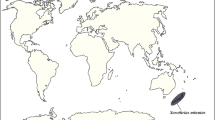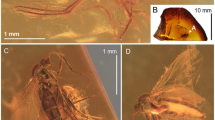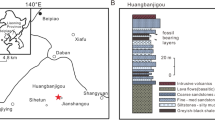Abstract
MR. P. H. GOSSE in the “Naturalist's Sojourn in Jamaica” (p. 66) makes the first reference to the occurrence of Peripatus in Jamaica, having found in 1845 five or six specimens near Bluefields, on the south-west coast of the island. Gosse regarded them as “rather allied to the Annelida than to the Mollusca.” No further mention of the animal is made until it was rediscovered at Bath in 1892, nearly fifty years after, by a local naturalist, Mrs. Swainson. Seven Peripatus were sent to the museum of the Institute of Jamaica, and later were briefly described by Messrs. Grabham and Cockerell in NATURE (1892, p. 514), when the specific term Jamaicensis was suggested. The year following over a dozen specimens were received by Dr. Grabham, also from Bath. The locality is in a most humid part of the eastern extremity of the island. Two or three examples have since been secured from widely separated spots, but the species has hitherto been regarded as one of much rarity, and as uncertain in its distribution. Various attempts made by different collectors to secure specimens have been unsuccessful.
This is a preview of subscription content, access via your institution
Access options
Subscribe to this journal
Receive 51 print issues and online access
$199.00 per year
only $3.90 per issue
Buy this article
- Purchase on Springer Link
- Instant access to full article PDF
Prices may be subject to local taxes which are calculated during checkout
Similar content being viewed by others
Author information
Authors and Affiliations
Rights and permissions
About this article
Cite this article
DUERDEN, J. Abundance of Peripatus in Jamaica. Nature 63, 440–441 (1901). https://doi.org/10.1038/063440d0
Issue Date:
DOI: https://doi.org/10.1038/063440d0
Comments
By submitting a comment you agree to abide by our Terms and Community Guidelines. If you find something abusive or that does not comply with our terms or guidelines please flag it as inappropriate.



